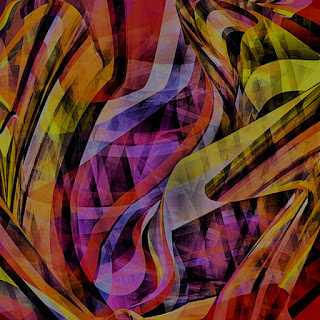 |
| "Blend" flickr photo by Andy Saxton3000 https://flickr.com/photos/andy-saxton2006/6115651293 shared under a Creative Commons (BY-NC-ND) license
Compelled to change to a low carb diet by my Gus' recent diabetes diagnosis and with that selecting from a seemingly endless list of recipes for cauliflower, hashbrowns was one that caught my eye.
Now, we've always enjoyed cauliflower with appropriate spices to tintillate our taste buds. And so, my journey into blending just the right seasonings and processing to transform this veggie into hashbrowns. The first attempt-- and reponse from Gus-- "It has no taste." The second attempt--"It's pretty soggy." The blending of spices and the consistency didn't transform/enhance/change the cauliflower. So I tweaked the blend-- I cooked the cauliflower rice in the microwave longer, I added more cheese, and I looked for seasonings that would make the change we wished to see (hot peppers, more basil, lots of pepper and a bit of mustard). A different blend and an expanded cauliflower outcome that brought smiles and satisfaction.
A coincidence perhaps-- those hashbrowns prompted me to consider possibililities as I sought a deeper understanding of blended learning. Having designed and facilitated an online course on Blended Learning for Powerful Learning Practice, I was anxious to reflect on that design based on the resources provided in the BlendKit 2017: Becoming a Blended Learning Designer MOOC in which I enrolled.
Starting with basic understandings, the BlendKit Reader Third Edition notes:
"Blended courses (also known as hybrid or mixed-mode courses) are classes where a portion of the traditional face-to-face instruction is replaced by web-based online learning." (emphasis their own)
Two aspects jumped out at me before I continued reading:
1. "traditional face-to-face instruction is replaced by web-based online learning" brought me to question, the process of redesign-- shouldn't the focus be on learning and the environment that best enables it, rather than instruction for all components? And how that lens engenders a multitude of what may have been previously unrealized possibilities? If we adopt the perspective that technology is the conduit for opportunities for learning not available without it, how does that influence redesign of optimal learning environments?
2. And where is learner voice and choice (an important tenet in K12 blended learning illustrated below by Jackie Gerstein and also found in an enlarged version here)? That had been foremost in my mind as I designed the Blended Learning eCourse.
In addition, from that same reading:
"blended learning lends itself to learner-centered, teacher-guided (as opposed to teacher-directed), interactive, and student-collaborative learning."I'm wondering on and envisioning the possibilities for learning when blended learning is reworked to be learner directed, learner governed-- when that is a foundation for redesigning environments for learning. George Siemens' quote later in the reading seemed to reaffirm that view: "By recognizing learning as a messy, nebulous, informal, chaotic process, we need to rethink how we design our instruction. ... learners can be provided with a rich array of tools and information sources to use in creating their own learning pathways."That resonates with me as well as did the studio based instruction delineated in Figure 31.3. Continuum of Instructional Practice Typically Found in Online and Blended Learning of the reading which was to the right of blended learning with a greater emphasis on learner agency. Not a complete articulation -- rather a clearer jumping off point for further thinking then. Blended Learning as learning face to face and web based That leverages technology to learn in ways not previously available That enables learner choice and voice That is messy And as Jackie Ramsey noted (a paraphrase of what she wrote) more than enhancement for learning as we holistically redesign. Which brings me back to the hashbrowns-- these weren't an enhanced version of cauliflower. These were a unique blend of process and ingredients that led to a tasty dish that expanded our cuisine. So with blended learning-- getting that unique blend of process and components that will expand and transform learning. |
--John Dewey.
Friday, March 10, 2017
Blending: Cauliflower Hashbrowns and Learning
Subscribe to:
Post Comments (Atom)

No comments:
Post a Comment